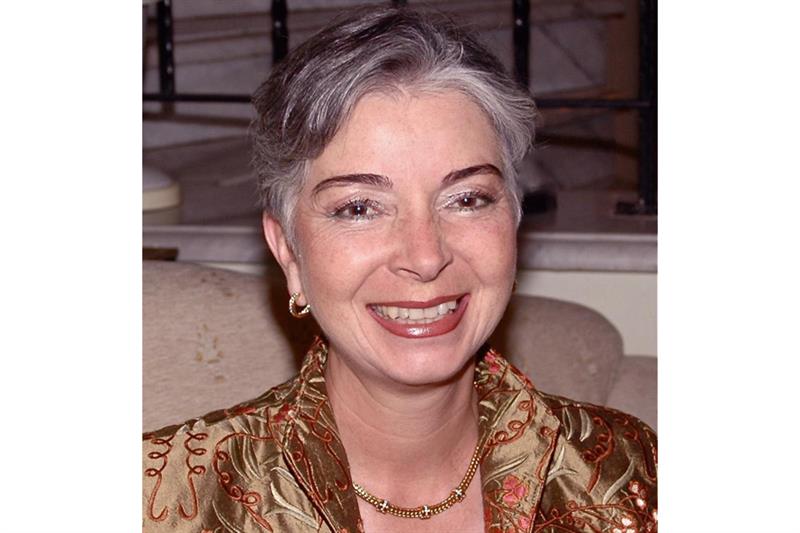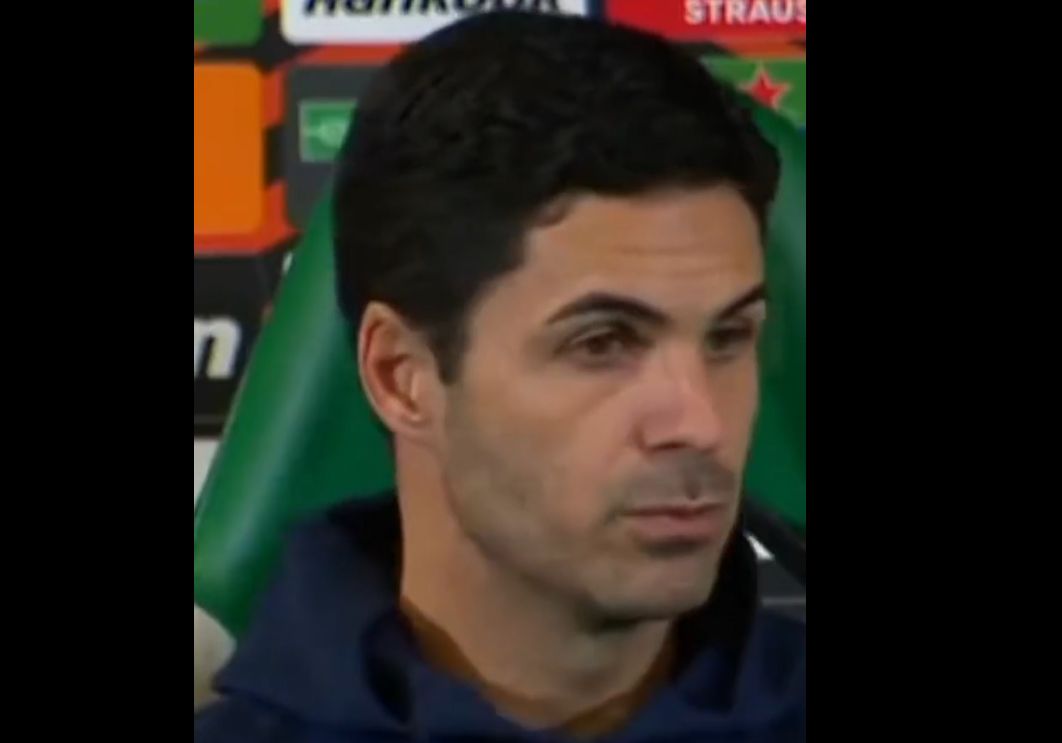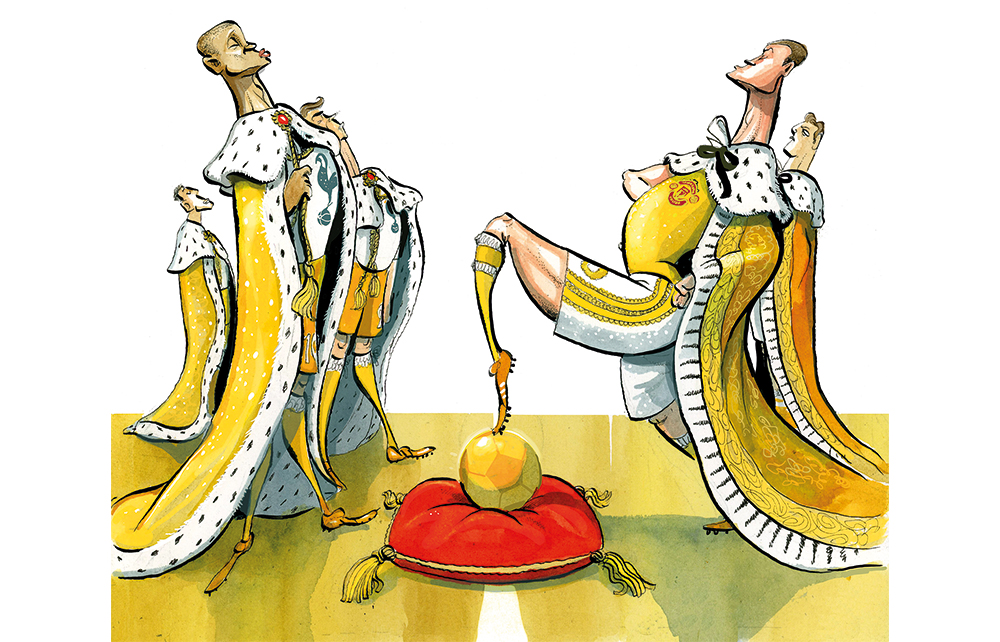Magda Saleh (1944-2023): The resilient butterfly – Culture – Al-Ahram Weekly

“Our wonderful, tender, strong, graceful butterfly with a refined taste and a heart full of love, flew away,” wrote the US-based Egyptian bass baritone Ashraf Sewailam on his Facebook page in response to the news of Magda Saleh’s passing on 11 June.
Sewailam is among the thousands of artists deeply saddened by the departure of Egypt’s first ever prima ballerina, a woman whose graceful wings seemed to enfold everyone she encountered, infusing their lives with colour. “A second mother, mentor and friend,” as pianist Mohamed Shams puts it, Saleh was close to him and many others, sharing her knowledge, expertise, wisdom and heart with many “children” she has had around the world. And while Saleh’s presence will continue to live through the countless people she has touched in her lifetime, her own journey wasn’t always a bed of roses.
It often seems as though Saleh was born in the wrong place or at the wrong time, but though the circumstances surrounding her career brought her disappointments and frustrations, she knew how to turn them into growth. Born to an Egyptian father and a Scottish mother, she was the only daughter among four children, and this gave her a unique strength. As Saleh revealed to me in a 2016 interview published hers, her three brothers always treated her as “one of the guys. It was a privileged position in a sense,” she said.
On the other hand, the academic backbone of the family contributed to her drive to learn and progress. Saleh’s father, Ahmed Abdel Ghaffar Saleh, was a distinguished scholar, a pioneer of agricultural education in Egypt. He held many key positions across a number of universities, including Vice President of the American University in Cairo (1965-1974).
BALLERINA: When the family moved to Alexandria, then a cosmopolitan city with many international figures teaching a new generation of young Egyptian artists, Saleh enrolled in the Alexandria Conservatory’s ballet department which at the time was run by a British lady from the Royal Academy of Dance. It didn’t take long for her sparkling talent to earn her a scholarship at the Arts Educational School at Tring, Hertfordshire, UK. But a mere two months into her experience abroad, the 1956 Suez Crisis broke out and all Egyptians had to be repatriated. Meanwhile the British ballet instructor was sent home, replaced by a local Italian. This was the first of many career-challenging events.
In 1957, hope reemerged with a visit by the world famous Moiseyev Dance Company (Theatre of Folk Art) to the Alexandria theatre. Igor Alexandrovich Moiseyev, the director of the company, visited the ballet class at the conservatory and was impressed by Saleh’s skill. He advised her to audition for a teacher who would come to Cairo from the Bolshoi the following year and, in no time, the young ballerina was being coached by an increasing number of masters from the Soviet Union, eventually finding herself among the first five girls to be sent to Moscow for further training. There Saleh spent two years at the Bolshoi Ballet Academy, graduating in 1965.
It is worth adding that, though Saleh’s father was proud of his daughter’s achievements in the dance field, he felt that a girl from her social class needed a more reliable – not to say “proper” – qualification. As such, alongside her ballet career, Saleh also studied at the English Language and Literature Department at Cairo’s Ain Shams University where she graduated in 1968 with high honours.
In 1966, the already emerging Cairo Ballet Company gave a historic performance of the Fountain of Bakhchisarai in which Saleh played Maria. Staged at the Khedivial Opera House or Royal Opera House (Egypt’s old opera house), the ballet was directed by choreographer Leonid Labrovsky, former artistic director of the Bolshoi Ballet, with the Cairo Symphony Orchestra conducted by Shaaban Abou Saad. Following the performance, the principal dancers were honoured with the state’s order of merit.
“Enjoy it, this is the first and last time we will get anything,” Enayat Azmi, the then dean of the ballet institute and head of the ballet company, told them. As far as Saleh was concerned, it was a strangely prophetic statement.
She continued to dance, playing Giselle (1968), which she described as her “dream role”, followed by other major roles in The Nutcracker, Don Juan, Daphnis and Chloe, the Paquita Variations and finally as Kitri in Don Quixote (May 1971). Her passion for dance remained paramount even if she also tried acting, appearing in a small role in Henry Barakat’s 1971 film Ebnati Al-Aziza. At the peak of dance career, the Khedivial Opera House burned down on 28 October 1971, putting the work of many remarkable young Egyptian dancers on hold.
While several of Saleh’s colleagues left for Moscow to continue their graduate studies, she received a scholarship to study modern dance techniques and choreography at the University of California at Los Angeles. In 1974 she completed her MA with a thesis entitled “An exploration, in modern idiom, of Egyptian themes”, to be followed by a PhDat New York University in 1979: “A Documentation of the Ethnic Dance Traditions of the Arab Republic of Egypt”.
Shortly after her return to Egypt, she resumed her work at the Higher Institute of Ballet, where she became professor and dean (1984-86). In October 1987, then culture minister Farouk Hosni offered her the directorship of the new Cairo Opera which was under construction, promising to support her all the way through.
In my 2016 interview with Saleh, she explained that she immediately began official meetings with the Japanese team working on the opera three years into its construction as the Culture and Education Centre, a multipurpose facility rather than an opera house as such, which is what the Egyptian authorities had in mind. This added to the challenges, with Saleh mediating the idea of a place that could host symphonic as well as ballet performances with that of a “cultural centre.” Though promised full support from the culture minister, issues kept piling up and communication broke down. “I learnt that there was no provision made in a ministry’s budget for the new building about to be inaugurated. I had to get creative. I prepared an outline for a grandiose inaugural event and laid plans for the first season, to which I invited all Egyptian companies to give their ideas. I also wanted to include Egypt’s traditional music, beyond Arabic and folklore,” she told me.
While the Japanese team glorified her efforts, the lack of support she received from the ministry made it hard for her to pursue anything as she imagined it. The story had a painful and a very unexpected ending for Saleh, when in 1988 she was informed that an Egyptian soprano and former dean of Institute of Music at the Academy of the Arts, Ratiba Al-Hefny, would be the chairperson of the Cairo Opera shortly before it opened, becoming her superior.
EGYPT ELSEWHERE: This blow made Saleh think of leaving the country. She accepted an invitation from New York University’s department of dance to become a visiting professor. It was in the early 1990s that she began to disconnect completely from Egyptian realities. She has also married Jack Josephson, the renowned art historian and authority on ancient Egyptian sculptures, by then her friend for many years.
In 1992, Saleh made New York her home away from home. Even if she retired from dance, she never gave up on Egypt, however. In New York she established a connection with the NY Public Library for the Performing Arts at the Lincoln Center, where together with her friend, Nimet Habachy, a programme presenter on a classical music station in New York, and Mona Mikhail, a professor at NYU and AUC, bass-baritone Ashraf Sewailam and baritone Raouf Zaidan, she was granted the space to hold events on Egyptian culture and art. Through the years, the project featured Sewailam, Zaidan and Kamel Boutros in presentations of opera in Arabic, films, and talks with Egyptian dance, ballet, theatre and music artists. While gaining popularity and opening the door to many Egyptian creators, the Library also hosted recitals of Egyptian musicians such as pianist Mohamed Shams, French horn player Amr Selim, and pianist Seba Ali, among others. For his part, Sherif Sonbol was the only Egyptian photographer to have his work exhibited in the Library in 2003, all on initiative of Saleh, who called her dynamism of the time “small things for Egypt in New York.”
In fact she concluded the interview by saying: “My career as a dancer was very brief, followed by dynamic academic development. Things didn’t necessarily go the way I foresaw them but this is how it happens in life. Despite all the obstacles I experienced at the Academy and the new Cairo Opera, my intention was always to give back to Egypt even if the circumstances didn’t always make that possible. Though I might not be physically in Egypt, wherever I go, Egypt is certainly within me. Maybe it is a romantic way of looking at things, but it keeps me going.”
It definitely kept her going. Through those years, Saleh captured numerous hearts, and today many Egyptian artists refer to her as someone who gave them “inspiration and beauty,” calling her “a fairy from dreamland,” among other sobriquets suggesting support and grace. Indeed, Saleh was a woman of high values, and as Sewailam describes the ballerina, she was characterised by “passion, competence, integrity, utter loveliness, leading by example.” Continuously challenged by life – from her earliest years in Alexandria, through burning of the Khedivial Opera to the disappointments that came with the opening of the New Opera House – Saleh never lost her sparkle. Even when she stopped dancing – and in a way she was forced to – she managed to redirect her energy to others. Instead of allowing the obstacles to bring her down or falling into the trap of bitterness, she became a great giver, using all her experience to support the others.
OVERDUE RECOGNITION: Saleh’s work in New York remained more than an ocean away from her home country, and for many years she was recognised mostly by the artists who knew her or stayed in close touch with her. In the many years following her departure to the United States, neither the Egyptian culture ministry nor any other body gave Egypt’s first ballerina the attention she deserved. In fact, recognition came very late, as she had to wait until the 2010s for her name to start reaching the younger generation of Egyptian arts followers. Definitely a part of this shift was due to the emergence of social media, which introduced Saleh to a new generation of Egyptians. She posted photos and snippets from the articles published about her and her colleagues at the ballet, her memories of Egypt in the 1950s through the early 1970s, always accompanied by an interesting caption about a ballet scene and the people she danced with.
This quickly became an initiative in Egyptian ballet history, and the seed of a 2016 documentary, A Footnote in Ballet History in which Saleh was featured. Written and directed by Hisham Abdel-Khalek, the film looks into the history of Egypt’s ballet and its first stars. The first important work shedding light on Saleh, the documentary went on the festival circuit garnering several nominations and a couple of awards.
In 2018, Saleh was honoured by the New York Theatre at an event, “From the Horse’s Mouth”, which included a screening of A Footnote in Ballet History as well as Egypt Dances (1977), a film that fuses movement and storytelling narrated by Saleh. Part of the ballerina’s PhD thesis, the film travels the length and breadth of Egypt to create a visual record of the numerous indigenous dance forms of the country.
As Saleh’s name began resurfacing again, in late 2019, the Tahrir Cultural Centre (TCC, American University in Cairo) organised a big event entitled “Dancing in the Light” which encompassed the life and art of Magda Saleh. The centre screened the documentary, launched an exhibition in tribute to the ballerina with the photos and archival material as well as photographs of the ballet by Sherif Sonbol. The AUC also commemorated her father, the former AUC Vice President Ahmed Abdel Ghaffar Saleh, with a portrait at the centre. In her turn, Saleh donated to the AUC a historic family piano dating back to 1906, commemorating her father and mother, Florence Saleh, who had bought the piano in the 1960s. The piano is now housed in TCC’s Oriental Hall.
The event was supplemented by a number of celebrations of Egypt’s first prima ballerina organised by other bodies. In December 2019, she toured Upper Egypt where, as she told Dina Ezzat on these, she recalled performing to peasants with the Cairo Ballet Company half a century earlier. Saleh visited the Alwanat Centre for Arts and Culture in Upper Egypt’s Minya where she spent time with some 40 girls aged between five and 13 and their parents for what she said was “the most beautiful demonstration of appreciation of ballet in the very heart of Egypt.”
Just a few months later, in March 2020, the Cairo Opera House management decided to organise an exhibition entitled “Egyptian Ballerina” at the Salah Tahir Gallery. The exhibition showcased photographs and documents concerning Saleh, many of which were featured in the “Dancing in the Light” event.
Each recognition Saleh received — however late it came — gave her joy. She continued to express her gratitude on Facebook and in interviews, never complaining of the hardships she had experienced and always trying to turn negative experiences into lessons and opportunities. Like the lady she was, Saleh took life as it came, and continued to give back to Egypt and Egyptian artists without hesitation. In 2020, on Mother’s Day, she wrote a note to her mother on Facebook. In it, she quoted the latter’s motto “Nil Desperandum” (Do Not Despair). No doubt, Magda Saleh lived up to those words.
The former ballerina often found solace in Shelter Islands where her husband has had a home for years, enjoying the little things of nature. “Me and my shadow,” she captioned a photo posted from Shelter Islands shared on social media in early 2022, a few months before Jack Josephson’s passing.
Saleh spent her last weeks at her family home in Cairo, passing away on 11 June within a year after her husband’s departure. Maybe she needed to be closer to her roots and memories as she had always reminisced about Egypt and her youth here. As she continues to live through the many people who love and cherish her work and person, the many values she embodied and the memories she created have already become part of our identity and future.
* A version of this article appears in print in the 15 June, 2023 edition of Al-Ahram Weekly
Short link:












